1. Clemens F, Sandström J. Double-barreled hypoplastic internal auditory canal in unilateral deafness. Acta Radiol Diagn (Stockh). 1975; 16:342–346. PMID:
1189959.

2. Goktas Bakar T, Karadag D, Calisir C, Adapinar B. Bilateral narrow duplicated internal auditory canal. Eur Arch Otorhinolaryngol. 2008; 265:999–1001. PMID:
18176812.

3. Curtin H, May M. Double internal auditory canal associated with progressive facial weakness. Am J Otol. 1986; 7:275–281. PMID:
3740236.
4. Weissman JL, Arriaga M, Curtin HD, Hirsch B. Duplication anomaly of the internal auditory canal. AJNR Am J Neuroradiol. 1991; 12:867–869. PMID:
1950913.
5. Weon YC, Kim JH, Choi SK, Koo JW. Bilateral duplication of the internal auditory canal. Pediatr Radiol. 2007; 37:1047–1049. PMID:
17704912.

6. Ferreira T, Shayestehfar B, Lufkin R. Narrow, duplicated internal auditory canal. Neuroradiology. 2003; 45:308–310. PMID:
12743665.

7. Cho YS, Na DG, Jung JY, Hong SH. Narrow internal auditory canal syndrome: parasagittal reconstruction. J Laryngol Otol. 2000; 114:392–394. PMID:
10912275.
8. Baik HW, Yu H, Kim KS, Kim GH. A narrow internal auditory canal with duplication in a patient with congenital sensorineural hearing loss. Korean J Radiol. 2008; 9(Suppl):S22–S25. PMID:
18607120.

9. Casselman JW, Offeciers FE, Govaerts PJ, Kuhweide R, Geldof H, Somers T, et al. Aplasia and hypoplasia of the vestibulocochlear nerve: diagnosis with MR imaging. Radiology. 1997; 202:773–781. PMID:
9051033.

10. Vilain J, Pigeolet Y, Casselman JW. Narrow and vacant internal auditory canal. Acta Otorhinolaryngol Belg. 1999; 53:67–71. PMID:
10102042.
11. Demir OI, Cakmakci H, Erdag TK, Men S. Narrow duplicated internal auditory canal: radiological findings and review of the literature. Pediatr Radiol. 2005; 35:1220–1223. PMID:
16079980.

12. Kesser BW, Raghavan P, Mukherjee S, Carfrae M, Essig G, Hashisaki GT. Duplication of the internal auditory canal: radiographic imaging case of the month. Otol Neurotol. 2010; 31:1352–1353. PMID:
20864882.
13. Ramírez-Camacho R, Berrocal JR, Arellano B. Bilateral malformation of the internal auditory canal: atresia and contralateral transverse megacrest. Otolaryngol Head Neck Surg. 2001; 125:115–116. PMID:
11458231.

14. Guirado CR. Malformations of the inner auditory canal. Rev Laryngol Otol Rhinol (Bord). 1992; 13:419–421.
15. Lee SY, Cha SH, Jeon MH, Bae IH, Han GS, Kim SJ, et al. Narrow duplicated or triplicated internal auditory canal (3 cases and review of literature): can we regard the separated narrow internal auditory canal as the presence of vestibulocochlear nerve fibers? J Comput Assist Tomogr. 2009; 33:565–570. PMID:
19638851.
16. Vincenti V, Ormitti F, Ventura E. Partitioned versus duplicated internal auditory canal: when appropriate terminology matters. Otol Neurotol. 2014; 35:1140–1144. PMID:
24836591.
17. Kono T, Kuwashima S, Arakawa H, Yamazaki E, Kitajima K, Ejima Y, et al. Narrow duplicated internal auditory canal: a rare inner ear malformation with sensorineural hearing loss. Arch Otolaryngol Head Neck Surg. 2009; 135:1048–1051. PMID:
19841348.
18. Kew TY, Abdullah A. Duplicate internal auditory canals with facial and vestibulocochlear nerve dysfunction. J Laryngol Otol. 2012; 126:66–71. PMID:
21867589.

19. Kishimoto I, Moroto S, Fujiwara K, Harada H, Kikuchi M, Suehiro A, et al. Bilateral duplication of the internal auditory canal: a case with successful cochlear implantation. Int J Pediatr Otorhinolaryngol. 2015; 79:1595–1598. PMID:
26209350.

20. Binnetoğlu A, Bağlam T, Sarı M, Gündoğdu Y, Batman Ç. A challenge for cochlear implantation: duplicated internal auditory canal. J Int Adv Otol. 2016; 12:199–201. PMID:
27716607.
21. Sakina MS, Goh BS, Abdullah A, Zulfiqar MA, Saim L. Internal auditory canal stenosis in congenital sensorineural hearing loss. Int J Pediatr Otorhinolaryngol. 2006; 70:2093–2097. PMID:
16996619.

22. Desai NK, Young L, Miranda MA, Kutz JW Jr, Roland PS, Booth TN. Pontine tegmental cap dysplasia: the neurotologic perspective. Otolaryngol Head Neck Surg. 2011; 145:992–998. PMID:
21705787.
23. Nixon JN, Dempsey JC, Doherty D, Ishak GE. Temporal bone and cranial nerve findings in pontine tegmental cap dysplasia. Neuroradiology. 2016; 58:179–187. PMID:
26458891.

24. Wang LS, Zhang LH, Sun XH, Yang YY, Chen YQ, Li X, et al. [Imaging features of duplication of the internal auditory canal.]. Zhonghua Er Bi Yan Hou Tou Jing Wai Ke Za Zhi. 2010; 45:481–485. PMID:
21055326.
25. Wang LS, Zhang LH, Li XY, Chen YQ, Li X, Sun ZG, et al. [CT and MRI diagnosis of congenital stenosis of the internal auditory canal.]. Zhonghua Er Bi Yan Hou Tou Jing Wai Ke Za Zhi. 2011; 46:533–538. PMID:
22088279.
26. Casselman JW, Offeciers EF, De Foer B, Govaerts P, Kuhweide R, Somers T. CT and MR imaging of congenital abnormalities of the inner ear and internal auditory canal. Eur J Radiol. 2001; 40:94–104. PMID:
11704356.
27. Norton SJ, Gorga MP, Widen JE, Folsom RC, Sininger Y, Cone-Wesson B, et al. Identification of neonatal hearing impairment: summary and recommendations. Ear Hear. 2000; 21:529–535. PMID:
11059708.

28. Sennaroglu L, Saatci I. A new classification for cochleovestibular malformations. Laryngoscope. 2002; 112:2230–2241. PMID:
12461346.

29. Stjernholm C, Muren C. Dimensions of the cochlear nerve canal: a radioanatomic investigation. Acta Otolaryngol. 2002; 122:43–48. PMID:
11876597.

30. Giesemann AM, Neuburger J, Lanfermann H, Goetz F. Aberrant course of the intracranial facial nerve in cases of atresia of the internal auditory canal (IAC). Neuroradiology. 2011; 53:681–687. PMID:
21448638.

31. Kariya S, Nishizaki K, Akagi H, Paparella MM. Abnormal direction of internal auditory canal and vestibulocochlear nerve. J Laryngol Otol. 2004; 118:902–905. PMID:
15638983.

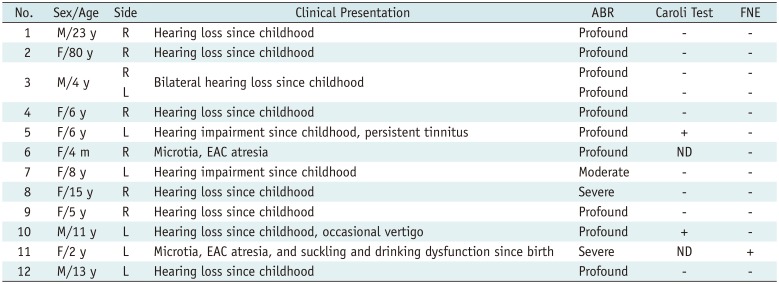
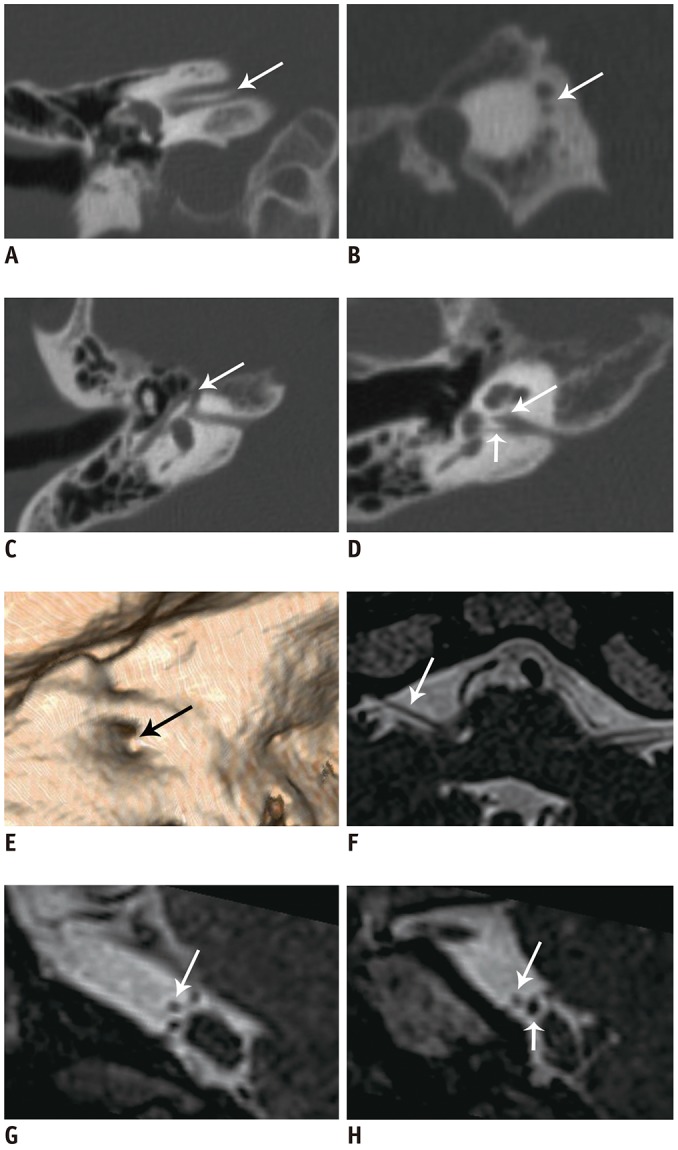
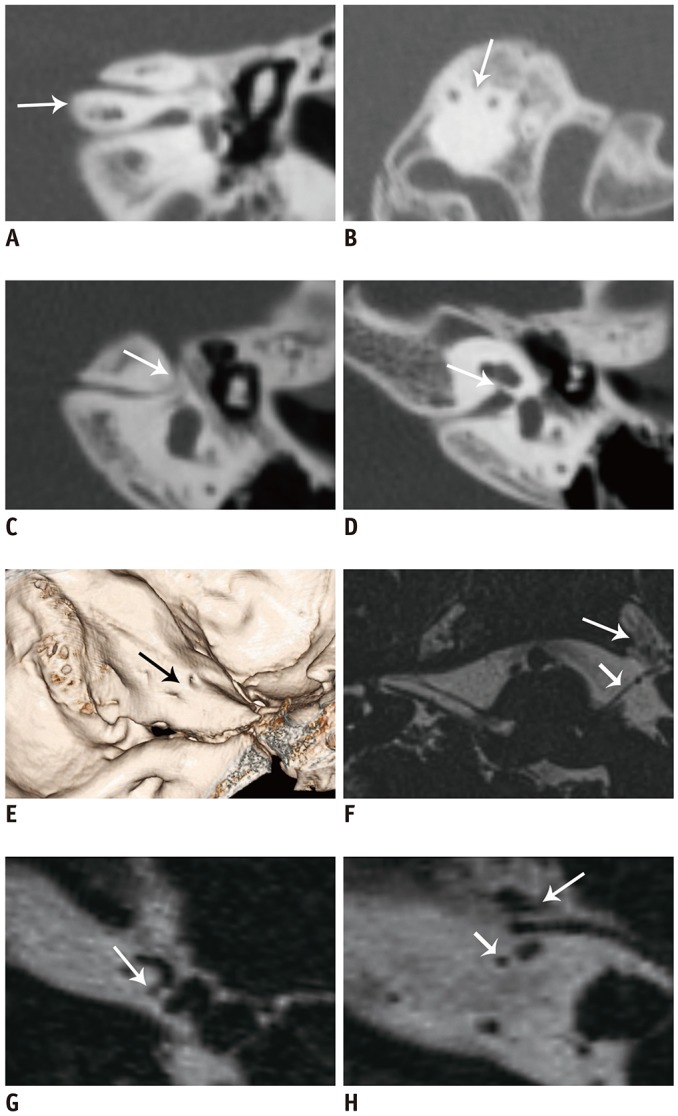
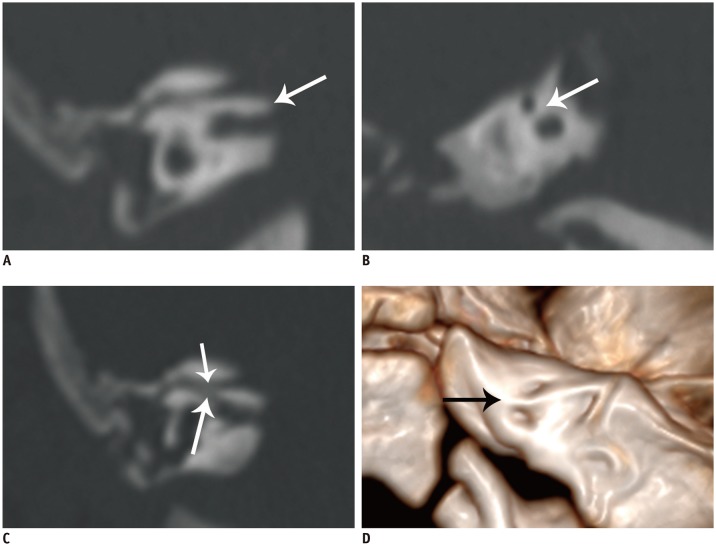
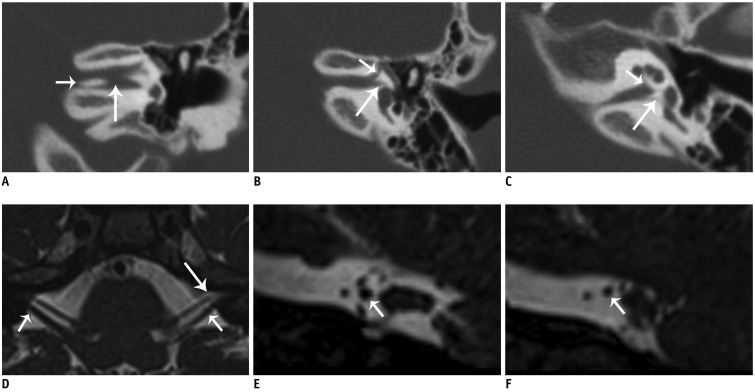




 PDF
PDF ePub
ePub Citation
Citation Print
Print



 XML Download
XML Download